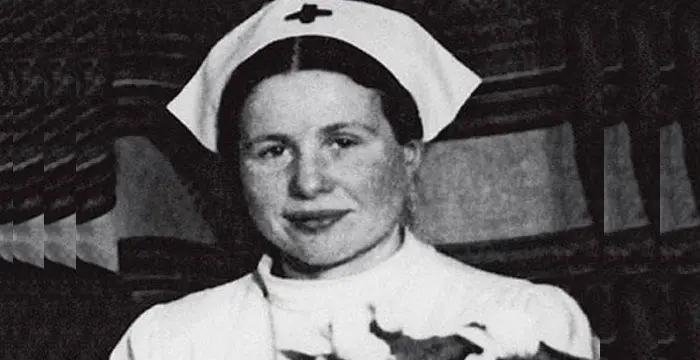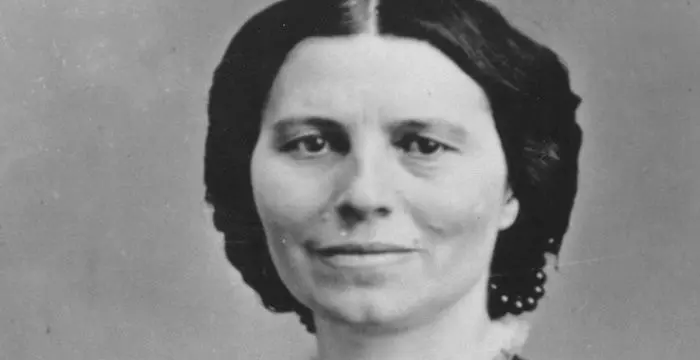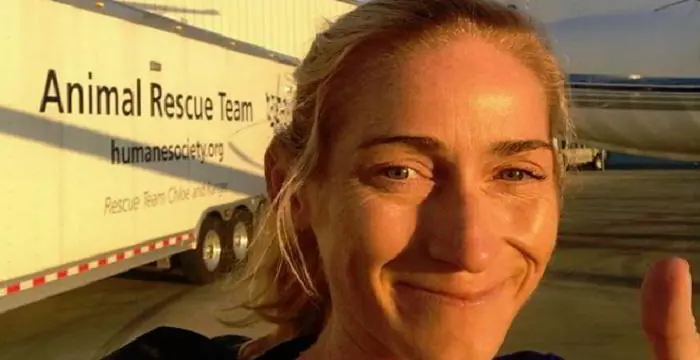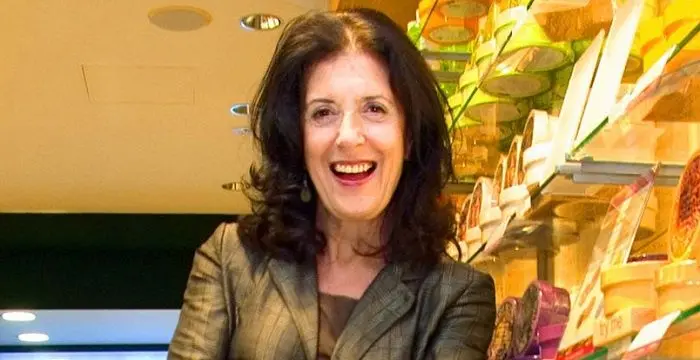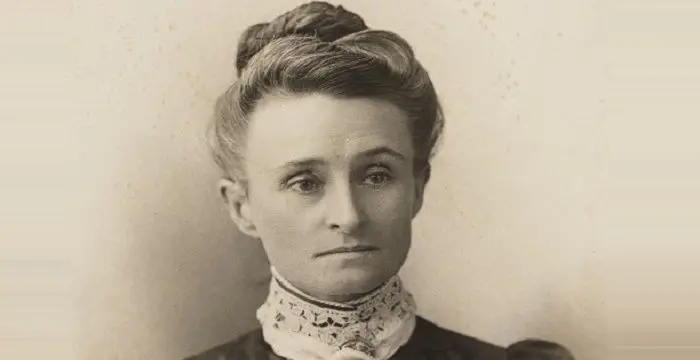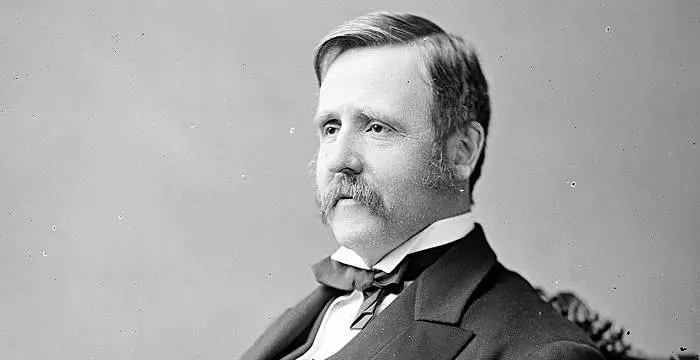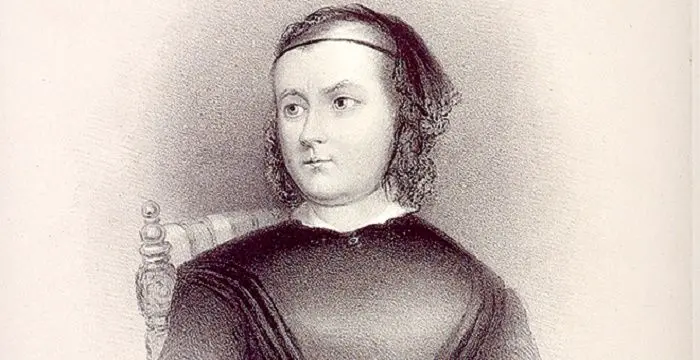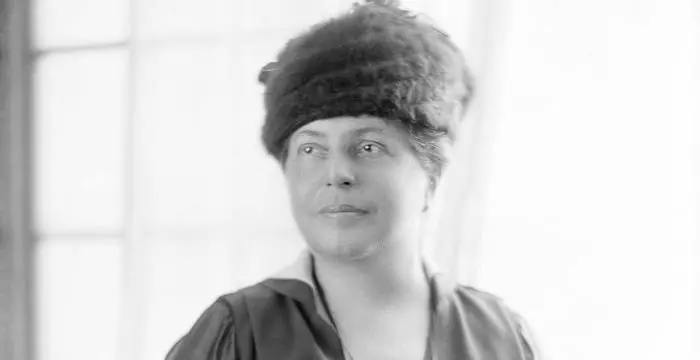
Lillian Wald - Nurses, Life Achievements and Life
Lillian Wald's Personal Details
Lillian D
| Information | Detail |
|---|---|
| Birthday | March 10, 1867 |
| Died on | September 1, 1940 |
| Nationality | American |
| Famous | Humanitarian, Activists, Human Rights Activists, Nurses |
| Known as | Lilian D. Wald |
| Humanitarian Works |
|
| Founder / Co-Founder |
|
| Birth Place | Cincinnati, Ohio |
| Gender | Female |
| Sun Sign | Pisces |
| Born in | Cincinnati, Ohio |
| Famous as | Humanitarian, Nurse, Activist |
| Died at Age | 73 |
// Famous Humanitarian
Joyce Meyer
Joyce Meyer is a Christian author and speaker. This biography provides detailed information about her childhood, life, achievements, works & timeline
Swami Vivekananda
Swami Vivekananda was the chief disciple of Sri Ramakrishna, and was responsible for awakening India spiritually. Check this biography to know in detail about his life, profile and timeline.
Nicole Kidman
Nicole Kidman is one of the most talented actors that the Hollywood film industry can boast of. Browse through this biography to get detailed information regarding her life, childhood, profile & timeline
Lillian Wald's photo
Who is Lillian Wald?
Lillian D. Wald was an American woman who started her career as a nurse and went on to become a renowned humanitarian and reformer for the less fortunate section of the society. She was the force behind the formation of Visiting Nurse Service and the Henry Street Settlement (New York). Being an advocate of justice and equality she served people from all sections of the society irrespective of their race and class, thereby promoting health and sanitary awareness amongst them. Her consideration for children and women was commendable wherein she worked on reforms pertaining to child labor and women sufferings. Lillian also worked towards promoting world peace through her pacifism and participation in politics during World War I. She tirelessly worked for suffrage and supported racial integration. She played an important role in the foundation of the National Association for the Advancement of Colored People (NAACP).
// Famous Nurses
Irena Sendler
Irena Sendler was a Polish nurse who along with her network is credited to have saved the lives of 2,500 Jewish children during the Holocaust. .
Clara Barton
Clara Barton was an American nurse, teacher and founder of the American Red Cross. Read this biography to learn more about her childhood, life, works, achievements and timeline.
Margaret Sanger
Margaret Sanger is an America born social activist, sex and birth control educator, and a nurse. Go through this biography to learn more about her profile, childhood, life and timeline.
Childhood & Early life
Lillian Wald was born as the third child to Max D. and Minnie Schwartz Wald on March 10, 1867, in Cincinnati, Ohio.
Her father who worked as an optical dealer came from a middle class German-Jewish family of scholars and merchants while her mother had Jewish Polish and Jewish German ancestry.
The Wald family shifted to Rochester, New York, during Lillian’s early childhood (1878), and Rochester became the hometown for Lillian.
Coming from an economically sound background, Lillian was enrolled for an expensive private schooling at Miss Cruttenden's English-French Boarding and Day School for Young Ladies where she was trained in French and German.
In 1883, at the young age of sixteen, Lillian tried for Vassar College but was not selected due to age issues. Following this, she spent the next few years travelling and serving as a newspaper correspondent.
At the age of twenty two, she finally ended up joining a nursing program at New York Hospital in August 1889.The inspiration to become a nurse came from a nurse from Bellevue Hospital in New York City she met the same year.
Career
Lillian completed her graduation in March, 1891 under the mentorship of Irene H. Sutliffe, the program’s director of nursing, following which she served at the juvenile asylum for a year and eventually resumed studies at the Woman’s Medical College for her M.D. degree.
During her education at the medical college, she also taught home nursing to people in the eastern region of New York.
She realized the sad state of the immigrants in this area when a little girl asked for help for her ill mother. She came eye to eye with reality of the poor and sick and called the experience as ‘baptism by fire’.
The poor living conditions and the lack of medical aid touched her after which she let go of her education and shifted base to that downtrodden side of New York on Jefferson Street in 1893 with her friend Mary Brewster.
They together set up the ‘Visiting Nurse Service’ in 1893 and later shifted base to Henry Street in 1895. Gradually, the team grew from 9 trained nurses in 1893 to 15 in 1900 and 27 in 1927.
’The Henry settlement’ continued to grow steadily and in 1913 it had nine houses, seven vacation houses, three stock rooms, clinics and a club membership of approximately 3000 people. In 1914, a total of 100 nurses rendered services through the Nurses' Settlement.
Apart from health aid, the Henry Street Settlement offered various other services such as housing, basic education, language and music lessons, also rendering employment in the process.
She also set up recreational services by making the largest playground of the Eastern side of New York and also a playhouse known as the Henry Street Neighborhood Playhouse in 1915.
Seeing Lillian’s philanthropy, Jacob Schiff (coming from a rich influential family of New York Financers) sponsored a house for Lillian’s nursing team on the Henry Street.
The Henry Street Settlement had an advantage over other such settlements as being a non-differential full time service provider in the proximity of the needy whereas other denominational groups emphasized only on members’ needs and relied totally on part time volunteers.
Wald’s work in the field of world peace was also commendable. Being a pacifist and the chairman of the American Union against Militarism (AUAM), she directed her efforts in developing friendly relations with Mexico instead of warfare.
She also worked for world peach by protesting United State’s involvement in the World War I through ‘Women’s Peace Party’ and ‘Women’s International League for Peace and Freedom’.
Awards & Achievements
The term 'public health nurse' (influenced by her ways of nursing the poor) was introduced by Lillian; following which; the New York Board of Health finally developed the first public nursing system in the world.
She was the one to introduce the national health insurance plan.
In 1903, Wald helped in the formation of the Women Trade Union League. The National Child Labor Committee (NCLC) was led by Lillian Wald. It emphasized on the need of education and worked against child labor.
She also proposed the need of education for the physically disabled children, lunch programs in school to the New York City Board of Education.
The Columbia University School of Nursing and the Federal Children's Bureau were founded by Lillian Wald in 1912. Following which the Town and Country Nursing Service of the American Red Cross was also established by her.
Lillian Wald was a civil right activist as well and worked for the equality of different races. She founded the National Association for the Advancement of Colored People (NAACP)
Lillian was honored by the Gold Medal of the National Institute of Social Sciences (1912), the Rotary Club Medal, and the Better Times Medal.
Lillian Wald was considered as one of the 12 greatest living American women by the New York Times in 1922.
She was accredited for her commendable work in New York with the Lincoln Medallion.
In 1970 she was elected in ‘the Hall of Fame for Great Americans’. The Lillian Wald Houses on Avenue D in Manhattan were named after her as a token of respect and honor.
Personal Life & Legacy
Lillian was deeply influenced by her grandfather, Gutman Schwartz with whom she spent a major part of her childhood.
Lillian was so devoted to her Henry Street Settlement that she remained unmarried for her entire life. She, however, had a special place in heart for two of her female friends – author Mabel Hyde Kittredge and lawyer Helen Arthur.
By 1925 Lillian struggled with heart ailments and eventually in 1933 she had to quit the Henry Street Settlement due to deteriorating health.
Lillian shifted to Westport, Connecticut, and finally gave up the chairmanship of the Henry Street Settlement board in 1937.
She succumbed to cerebral hemorrhage on September 1, 1940 at her Connecticut house and was cremated at a family plot in Rochester, New York.
As a present on her 70th birthday, a letter from President Franklin Roosevelt was officially read on radio to appreciate Lillian for her selfless and humanitarian efforts for social well-being.
// Famous Activists
Temple Grandin
Temple Grandin is a well-known American writer, autistic activist and animal expert. This biography profiles her childhood, life, achievements, career and timeline
Susan Sontag
Susan Sontag is an American critical essayist, cultural analyst, novelist, political activist, filmmaker and playwright of international repute. Read on to find out more about her childhood, career, profile and timeline.
Serj Tankian
Serj Tankian is a famous American singer-songwriter and member of the band, ‘System of a Down’. This biography profiles his childhood, music career, life, achievements and timeline.
Lillian Wald biography timelines
- // 10th Mar 1867Lillian Wald was born as the third child to Max D. and Minnie Schwartz Wald on March 10, 1867, in Cincinnati, Ohio.
- // 1878The Wald family shifted to Rochester, New York, during Lillian’s early childhood (1878), and Rochester became the hometown for Lillian.
- // 1883In 1883, at the young age of sixteen, Lillian tried for Vassar College but was not selected due to age issues. Following this, she spent the next few years travelling and serving as a newspaper correspondent.
- // Aug 1889At the age of twenty two, she finally ended up joining a nursing program at New York Hospital in August 1889.The inspiration to become a nurse came from a nurse from Bellevue Hospital in New York City she met the same year.
- // 1891Lillian completed her graduation in March, 1891 under the mentorship of Irene H. Sutliffe, the program’s director of nursing, following which she served at the juvenile asylum for a year and eventually resumed studies at the Woman’s Medical College for her M.D. degree.
- // 1893The poor living conditions and the lack of medical aid touched her after which she let go of her education and shifted base to that downtrodden side of New York on Jefferson Street in 1893 with her friend Mary Brewster.
- // 1903In 1903, Wald helped in the formation of the Women Trade Union League. The National Child Labor Committee (NCLC) was led by Lillian Wald. It emphasized on the need of education and worked against child labor.
- // 1912The Columbia University School of Nursing and the Federal Children's Bureau were founded by Lillian Wald in 1912. Following which the Town and Country Nursing Service of the American Red Cross was also established by her.
- // 1912Lillian was honored by the Gold Medal of the National Institute of Social Sciences (1912), the Rotary Club Medal, and the Better Times Medal.
- // 1915She also set up recreational services by making the largest playground of the Eastern side of New York and also a playhouse known as the Henry Street Neighborhood Playhouse in 1915.
- // 1922Lillian Wald was considered as one of the 12 greatest living American women by the New York Times in 1922.
- // 1925 To 1933By 1925 Lillian struggled with heart ailments and eventually in 1933 she had to quit the Henry Street Settlement due to deteriorating health.
- // 1937Lillian shifted to Westport, Connecticut, and finally gave up the chairmanship of the Henry Street Settlement board in 1937.
- // 1st Sep 1940She succumbed to cerebral hemorrhage on September 1, 1940 at her Connecticut house and was cremated at a family plot in Rochester, New York.
- // 1970In 1970 she was elected in ‘the Hall of Fame for Great Americans’. The Lillian Wald Houses on Avenue D in Manhattan were named after her as a token of respect and honor.
// Famous Human Rights Activists
Michael Bolton
Michael Bolton is a Grammy Award winning singer and songwriter. Read this biography to learn more about his childhood, profile, life and timeline.
Maggie McGuane
Maggie McGuane is the daughter of Canadian-American actress and activist Margot Kidder. Check out this biography to know about her family, personal life, age, birthday, etc.
Anita Roddick
Anita Roddick was the founder of ‘The Body Shop’, the popular cosmetic brand. This article offers detailed information about her life, career, profile, humanitarian works and timeline
Edith Cowan
Edith Dircksey Cowan (née Brown) was an Australian politician and social campaigner. This biography profiles her childhood, life, career, social work, achievements and timeline.
Charles Perkins
Charles Perkins was an Australian aboriginal activist and soccer player, famous for his efforts to provide a better life to indigenous tribes. Read on for detailed information on his childhood, profile, career and timeline
Caroline Chisholm
Caroline Jones Chisholm was an English philanthropist and humanitarian known for working towards female immigrant welfare in Australia. This biography profiles his childhood, life, career, activities, achievements and timeline.
Lillian Wald's FAQ
What is Lillian Wald birthday?
Lillian Wald was born at 1867-03-10
When was Lillian Wald died?
Lillian Wald was died at 1940-09-01
Where was Lillian Wald died?
Lillian Wald was died in Westport, Connecticut
Which age was Lillian Wald died?
Lillian Wald was died at age 73
Where is Lillian Wald's birth place?
Lillian Wald was born in Cincinnati, Ohio
What is Lillian Wald nationalities?
Lillian Wald's nationalities is American
Which company or organization was founded by Lillian Wald?
Lillian Wald was the founder/co-founder of The Nurses' Settlement, Women's Trade Union League, National Association for the Advancement of Colored People, Visiting Nurse Service of New York
What is Lillian Wald's sun sign?
Lillian Wald is Pisces
How famous is Lillian Wald?
Lillian Wald is famouse as Humanitarian, Nurse, Activist





